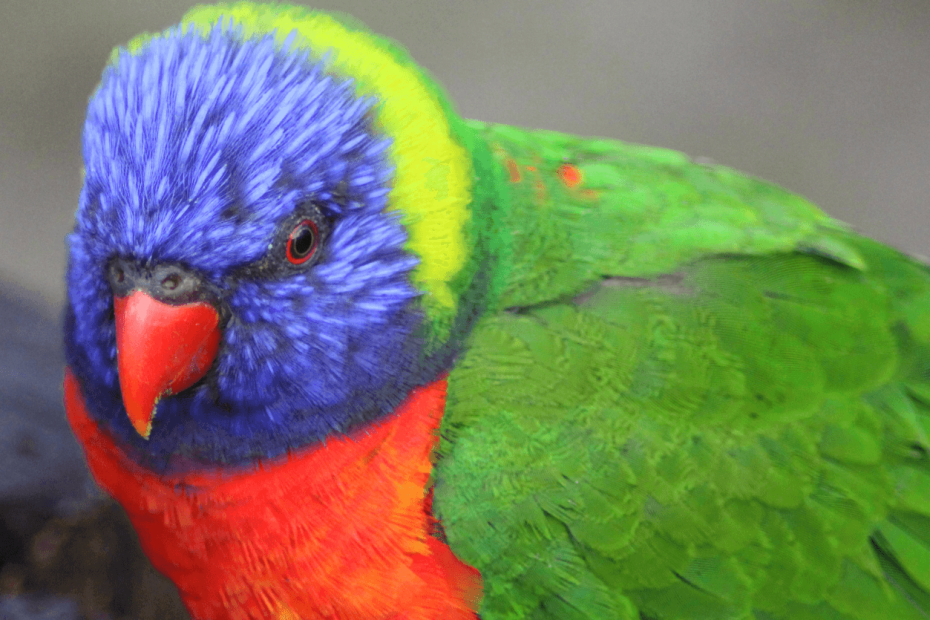Have you ever laid eyes on a blue bird with a vibrant red head? These captivating creatures are truly a sight to behold. From their striking blue feathers to their eye-catching red crown, blue birds with red heads are nothing short of mesmerizing.
Step into the fascinating world of these stunning avian wonders as we explore their unique features and learn more about their intriguing behavior. Discover how they earned their name and the distinctive calls they use to communicate with one another.
It’s no wonder that blue birds with red heads have become such a popular subject of interest among nature enthusiasts. Get ready to immerse yourself in the enchanting realm of these colorful birds, as we delve into their beauty, charm, and allure. So let’s begin our journey and uncover the secrets behind these extraordinary feathered friends.
Exploring Eastern Bluebird Identification
Eastern Bluebirds are stunning birds with their vibrant blue plumage and striking red heads. If you’re a bird enthusiast or simply enjoy observing nature, it’s essential to know how to identify these beautiful creatures accurately. We’ll provide helpful tips for identifying Eastern Bluebirds in the wild.
Understanding Eastern Bluebird Physical Characteristics
Eastern Bluebirds possess several unique physical traits that make them easily distinguishable. Their most notable feature is their bright blue feathers, which cover their backs, wings, and tails. The intensity of the blue hue can vary slightly among individuals but remains a defining characteristic.
Another prominent feature of Eastern Bluebirds is their reddish-orange breast and throat. This vibrant coloration stands out against the backdrop of their blue plumage, making them quite eye-catching. It’s worth noting that while both male and female bluebirds display these colors, males tend to have more vibrant hues.
Furthermore, Eastern Bluebirds have white bellies and underparts that contrast sharply with their colorful upper bodies. This stark division between the blue wings and tail and the white belly is a significant distinguishing feature when identifying these birds.
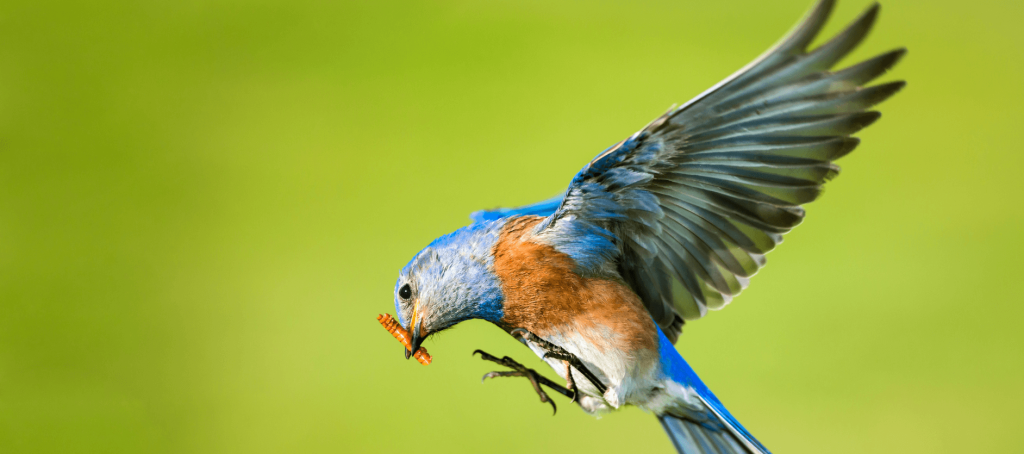
Differentiating Eastern Bluebirds from Other Species
While there are various species of bluebirds across North America, differentiating between them can be challenging at times. However, by paying attention to specific details, you can confidently identify an Eastern Bluebird.
One key characteristic that sets apart the Eastern Bluebird from its counterparts is its red head. Western Bluebirds, for instance, have predominantly brownish-gray heads instead of the striking red found on an Eastern Bluebird’s crown.
Examining the coloration of the bird’s back can help confirm its identity as an Eastern Bluebird. Unlike Mountain Bluebirds with their pale-blue backs or Western Bluebirds with their blue-gray backs, Eastern Bluebirds exhibit a rich, deep blue coloration.
Read more: How many chickens can you have per acre?
Tips for Identifying Eastern Bluebirds in the Wild
Identifying Eastern Bluebirds in their natural habitat can be an exciting and rewarding experience. Here are some helpful tips to enhance your chances of spotting these captivating birds:
- Look for open grassy areas: Eastern Bluebirds prefer open habitats such as meadows, fields, and golf courses. Keep an eye out for them perched on fence posts or low branches.
- Observe their behavior: Eastern Bluebirds have a distinctive flight pattern characterized by short bursts of flapping followed by gliding. Pay attention to this unique flight style when trying to identify them.
- Listen to their song: Familiarize yourself with the melodious song of the Eastern Bluebird, which consists of soft warbles and trills. By recognizing their vocalizations, you can narrow down potential sightings.
- Spotting nesting boxes: Eastern Bluebirds readily use nest boxes provided by humans. If you come across a well-maintained nesting box in a suitable habitat, there’s a good chance it may be inhabited by these beautiful birds.
By understanding the physical characteristics that distinguish Eastern Bluebirds from other species and employing these identification tips, you’ll become more adept at recognizing these delightful creatures during your outdoor adventures.
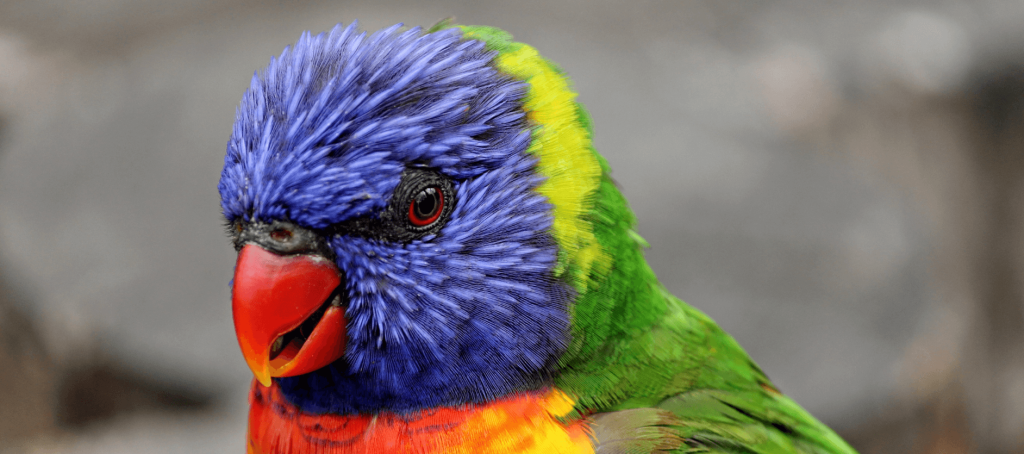
Mountain Bluebird vs Red-headed Woodpecker: Key Differences
Uncover the significant differences between Mountain Bluebirds and Red-headed Woodpeckers. Compare and contrast the unique traits and behaviors of these two bird species. Learn how to distinguish Mountain Bluebirds from Red-headed Woodpeckers at a glance. Understand why Mountain Bluebirds and Red-headed Woodpeckers are often confused.
Mountain Bluebirds (Sialia currucoides) and Red-headed Woodpeckers (Melanerpes erythrocephalus) may share similar habitats, but their appearances and behaviors set them apart. Let’s take a closer look at these fascinating birds to understand the key differences.
Appearance:
The most obvious distinction lies in their physical characteristics. The Mountain Bluebird boasts a vibrant blue plumage that captures attention effortlessly, while the Red-headed Woodpecker showcases its namesake red head along with a black body, white belly, and wings with prominent white patches. These distinct colorations make identification relatively straightforward.
Behavior:
These birds exhibit contrasting habits. The Mountain Bluebird is primarily insectivorous, foraging on the ground or perched on low branches in search of insects like beetles, crickets, and grasshoppers. In contrast, the Red-headed Woodpecker is an omnivore that feeds on insects as well as fruits, nuts, seeds, and even small vertebrates such as lizards or nestling birds.
Another notable difference lies in their feeding techniques. While both species are capable of drilling into trees for food sources, the Red-headed Woodpecker employs its strong bill to store food in crevices for later consumption—a behavior not observed in Mountain Bluebirds.
Habitat:
Mountain Bluebirds prefer open habitats such as meadows or grasslands where they can find suitable nesting sites like natural cavities or old woodpecker holes. On the other hand, Red-headed Woodpeckers thrive in a variety of habitats including woodlands, orchards, and even suburban areas with mature trees. They are known for their acrobatic flight patterns as they swoop between trees or perch on vertical surfaces.
Vocalizations:
Both species have distinct vocalizations that aid in identification. The Mountain Bluebird’s song is a soft warbling melody that carries across open spaces. In contrast, the Red-headed Woodpecker produces a series of sharp calls and drumming sounds to communicate with its mate or defend its territory.
Confusion Factors:
Despite their unique characteristics, there are instances where these birds can be mistaken for one another. For example, immature Red-headed Woodpeckers may lack the vibrant red head and instead display a mottled brownish plumage resembling that of female Mountain Bluebirds.
When viewed from a distance or in poor lighting conditions, the blue coloration of Mountain Bluebirds may appear darker and less vibrant, leading to confusion with other blue-colored species such as the Eastern Bluebird or Western Bluebird.
The Fascinating World of Blue Birds with Red Heads
Bluebirds with red heads are some of the most captivating creatures in the avian world. Their vibrant plumage and unique characteristics make them a subject of intrigue for bird enthusiasts and casual observers alike. Let’s dive into the intriguing lives and behaviors of these fascinating birds.
Habitat Preferences, Nesting Habits, and Migration Patterns
Blue birds with red heads can be found in various habitats around the world. From dense forests to open grasslands, these birds have adapted to thrive in different environments. Some species, like the scarlet macaw, prefer tropical rainforests, while others, such as small songbirds like finches or manakins, can be found in more diverse habitats.
Blue birds with red heads exhibit interesting behaviors. They often construct their nests in tree holes or nest boxes, utilizing natural cavities or man-made structures for shelter. Barn swallows are known for building cup-shaped nests made from mud pellets attached to walls or ceilings.
Migration is another remarkable aspect of their lives. Many blue birds with red heads undertake long journeys across vast distances during specific seasons. They rely on favorable weather conditions and abundant food sources along their migration routes. Indigo buntings, for example, travel thousands of miles from North America to Central and South America each year.
Diet, Feeding Habits, and Interactions with Other Bird Species
Blue birds with red heads have diverse dietary preferences depending on their species. While some primarily feed on insects like barn swallows that catch flying insects on the wing using their agile flight skills and wide gapes; others may consume seeds and fruits like finches or scarlet macaws that rely on feeders filled with seeds or fruits provided by humans.
Interactions between blue birds with red heads and other bird species can vary greatly as well. In some cases, they peacefully coexist, sharing feeding areas or nesting sites. However, competition for resources can also lead to territorial disputes and aggressive behavior. Observing these interactions provides valuable insights into bird behavior and social dynamics.
Interesting Facts That Make Blue Birds with Red Heads Truly Remarkable
Blue birds with red heads possess a range of unique characteristics that set them apart from other avian species. Here are some interesting facts about these remarkable birds:
- The vibrant red coloration of their heads is often caused by specialized feather pigments called carotenoids.
- Some blue birds with red heads engage in elaborate courtship displays, showcasing their colorful plumage to attract mates.
- Certain species have the ability to mimic the songs of other birds, adding an extra layer of complexity to their vocal repertoire.
- Blue birds with red heads play crucial roles in ecosystems by dispersing seeds and controlling insect populations.
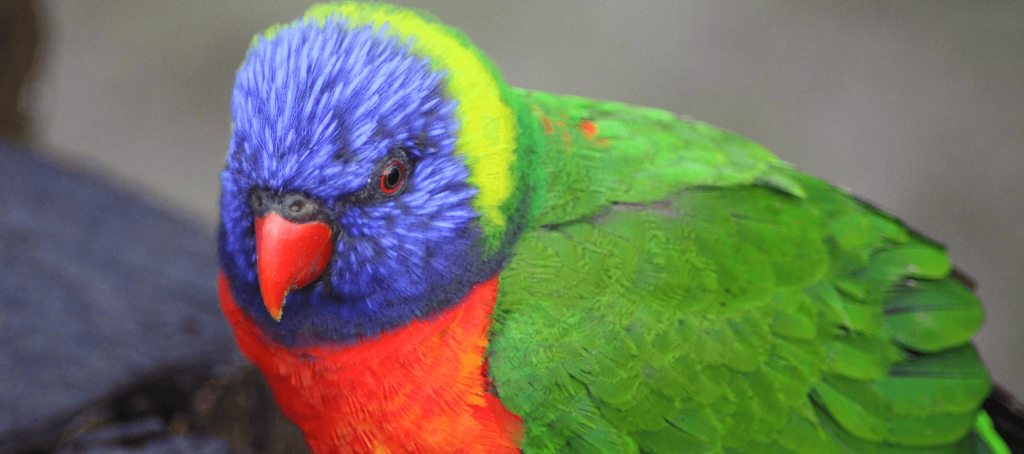
Different Species of Blue Birds with Red Heads
Blue birds with red heads are a captivating category of bird species that exhibit stunning colors and unique characteristics. Let’s delve into the world of these enchanting creatures and explore the various species that belong to this group.
Exploring the Species
There is a wide array of species beyond the commonly known Eastern and Mountain varieties. One such species is the Purple Finch (scientific name: Haemorhous purpureus), which showcases a vibrant red head contrasting beautifully with its bluish plumage. These finches are often found in North America, particularly in coniferous forests.
Another fascinating member of this group is the Red-bellied Nuthatch (scientific name: Sitta canadensis). Despite its misleading name, this small-sized bird possesses a striking blue-gray back and a distinctive rusty-red crown on its head. Known for their acrobatic behavior, these nuthatches can be spotted climbing up and down tree trunks in search of insects.
Read more: How many chickens per acre free range ?
Unique Characteristics
Each individual species within the blue birds with red heads category possesses specific characteristics that set them apart from one another. House Finches (scientific name: Haemorhous mexicanus) are renowned for their melodic songs, adding musical charm to gardens across North America. With their reddish-orange heads and brown-streaked feathers, they bring joy to bird enthusiasts.
Scarlet Tanagers (scientific name: Piranga olivacea) also deserve special mention as they grace woodlands with their brilliant red plumage and jet-black wings. These migratory songbirds have an unmistakable appearance that makes them stand out among other avian inhabitants.
Rare and Endangered Gems
Within this group, some blue birds with red heads face threats of rarity or endangerment due to habitat loss or other factors. The Western Tanager (scientific name: Piranga ludoviciana) is a prime example. This striking bird, with its bright yellow body and contrasting red head, can be found in western North America. However, its population has been declining due to the destruction of its breeding grounds.
The Red-breasted Nuthatch (scientific name: Sitta canadensis) is another species that deserves attention. With its blue-gray upperparts and rusty-red crown, this nuthatch brings color to coniferous forests across North America. Unfortunately, its numbers have dwindled in certain regions, highlighting the need for conservation efforts.
Identifying and Appreciating the Eastern Bluebird
The Eastern Bluebird is a captivating bird species that can be easily identified based on its distinct features. Let’s delve into the world of these beautiful creatures and explore their behavior, habitat preferences, significance in local ecosystems, and their importance in birdwatching.
Learn how to identify an Eastern Bluebird based on its distinct features
Eastern Bluebirds are known for their vibrant plumage, featuring a stunning combination of blue feathers on their upper body and a rusty red breast. The males boast brighter colors compared to females, making them even more eye-catching. Both genders exhibit white bellies and relatively small beaks.
When observing an Eastern Bluebird in flight, you’ll notice their wings displaying patches of sky-blue coloration. These distinctive traits make it relatively easy to differentiate them from other bird species that might share similar habitats.
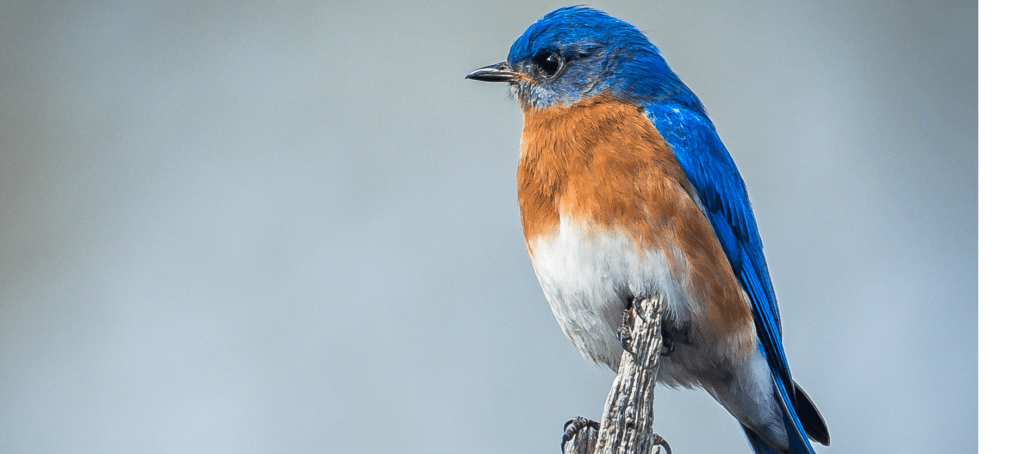
Gain insights into the behavior and habitat preferences of Eastern Bluebirds
Eastern Bluebirds are primarily found in open woodland areas with scattered trees or perches. They prefer nesting in natural cavities such as abandoned woodpecker holes or hollows within trees. However, they readily accept man-made nest boxes as well.
These birds have fascinating behaviors. They mainly consume insects like beetles, grasshoppers, caterpillars, and spiders. Interestingly, they often perch on low branches or fence posts while hunting for prey. This behavior allows them to spot insects crawling on the ground before swooping down swiftly to capture their meal.
Discover the significance of Eastern Bluebirds in local ecosystems
Eastern Bluebirds play a vital role within their ecosystems by controlling insect populations through predation. By consuming various pests that can harm crops or gardens, they act as natural pest control agents. Their diet includes harmful insects like beetles and grasshoppers while also targeting pests like moths that damage agricultural produce.
Moreover, these birds also contribute to seed dispersal. As they consume berries and fruits, the seeds pass through their digestive system and are deposited in different locations, aiding in plant propagation.
Appreciate the beauty and importance of Eastern Bluebirds in birdwatching
Birdwatchers across the East Coast have a special appreciation for Eastern Bluebirds due to their stunning appearance and delightful behavior. Their vibrant colors make them a sought-after sight for enthusiasts who enjoy observing birds in their natural habitats.
Eastern Bluebirds are often used as indicators of ecosystem health. Their presence or absence can provide valuable insights into the overall well-being of an area’s bird population and environment.
Read more: Fun facts about the Eagles
Exploring the Unique Characteristics of Mountain Bluebirds
Mountain Bluebirds are a fascinating species of birds that possess distinct qualities setting them apart from other blue birds with red heads. From their preferred habitats to their striking physical features, these avian creatures captivate the attention of bird enthusiasts worldwide.
Discover what sets Mountain Bluebirds apart from other blue birds with red heads.
Mountain Bluebirds, scientifically known as Sialia currucoides, stand out among their counterparts due to several unique characteristics. Unlike other blue birds with red heads, such as the Eastern Bluebird or Western Bluebird, Mountain Bluebirds have a vibrant sky-blue plumage that extends across their entire body. Their captivating hue is complemented by a contrasting reddish-orange breast and throat. This distinctive coloration makes them easily distinguishable from other members of the bluebird family.
Learn about their preferred habitats, nesting habits, and migration patterns.
Mountain Bluebirds primarily inhabit open areas within forest habitats across North America. They prefer lowland forests and can often be found in grasslands or meadows surrounded by scattered trees. These birds actively seek out nesting locations in cavities found in trees or even man-made structures like nest boxes. Their nesting habits involve selecting a suitable cavity and constructing nests using fine grasses or pine needles.
Migration is an essential part of the Mountain Bluebird’s life cycle. During winter, when food becomes scarce in their breeding territories, they embark on long-distance journeys to more favorable regions. Some populations migrate southward to Mexico or Central America, while others may stay closer to home in southern parts of the United States.
Explore the striking physical features that make Mountain Bluebirds stand out.
Apart from their vibrant plumage, Mountain Bluebirds possess several physical attributes that make them truly remarkable. With an average length of 6-7 inches (15-18 cm), these small-to-medium-sized songbirds exhibit slender bodies and long, pointed wings. Their beaks are short and straight, perfectly adapted for catching insects in mid-air.
One striking feature of Mountain Bluebirds is their ability to flash their bright blue wings while in flight. This vibrant display serves multiple purposes, including attracting mates and defending their territory from intruders. It is a mesmerizing sight to witness these birds soaring through the sky, showcasing their vivid colors against a backdrop of green forests or open grasslands.
Understand why Mountain Bluebirds are highly sought after by bird enthusiasts.
Mountain Bluebirds hold a special place in the hearts of bird enthusiasts due to their captivating beauty and enchanting behaviors. Their presence adds an element of brilliance to any landscape they inhabit. Birdwatchers often travel great distances to catch a glimpse of these stunning creatures, making them highly sought after among nature lovers and photographers alike.
Read more: What do 3 black birds symbolize?
Conclusion
Blue birds with red heads are truly a sight to behold. From the stunning Eastern Bluebird to the unique characteristics of the Mountain Bluebird, these avian wonders captivate us with their beauty and diversity.
Throughout this article, we have explored various aspects of blue birds with red heads. We have delved into Eastern Bluebird identification, highlighting key features that distinguish them from other species. We compared Mountain Bluebirds to Red-headed Woodpeckers, emphasizing their distinct differences.
The world of blue birds with red heads is fascinating and filled with different species. Each one possesses its own unique charm and characteristics that make it special. By understanding and appreciating these distinctions, we can develop a deeper connection with these magnificent creatures.
In particular, the Eastern Bluebird stands out as an iconic symbol of beauty and grace. Identifying this species allows us to admire its vibrant blue plumage and striking red head more effectively. By appreciating their presence in our surroundings, we can contribute to their conservation efforts.
Meanwhile, Mountain Bluebirds offer a different set of qualities that make them equally captivating. Exploring their unique characteristics reveals their adaptability and resilience in diverse environments. Their ability to thrive in mountainous regions showcases nature’s incredible wonders.
As we conclude our exploration into blue birds with red heads, let us remember the importance of preserving these remarkable creatures for future generations. By supporting conservation initiatives and creating habitats conducive to their survival, we can ensure that they continue to grace our skies with their vibrant colors.
So why not take some time today to appreciate the beauty of blue birds with red heads? Whether it’s observing them in your backyard or learning more about them through educational resources, every effort counts towards protecting these magnificent creatures.
FAQs
How do I attract blue birds with red heads to my garden?
To attract blue birds with red heads like the Eastern Bluebird or Mountain Bluebird to your garden, consider providing suitable nesting boxes or birdhouses. These should be placed in open areas with nearby perches and a source of water. Offering food such as mealworms or berries can entice them to visit your garden.
Are blue birds with red heads endangered?
While some species of blue birds with red heads face conservation concerns, such as the Eastern Bluebird, others like the Mountain Bluebird are considered to have stable populations. It is important to support conservation efforts and create habitats that benefit these birds to ensure their long-term survival.
Can I find blue birds with red heads in urban areas?
Yes, it is possible to spot blue birds with red heads in urban areas, especially if suitable habitats are available. The Eastern Bluebird, for example, has adapted well to suburban environments and can often be found nesting in backyards or parks. Creating bird-friendly spaces can increase the chances of encountering these beautiful creatures.
What is the lifespan of a blue bird with a red head?
The lifespan of blue birds with red heads varies depending on the species. On average, Eastern Bluebirds live for about 6-10 years in the wild, while Mountain Bluebirds have been known to live up to 6-10 years as well. Providing suitable habitat and minimizing threats can contribute to their longevity.
How can I contribute to the conservation of blue birds with red heads?
You can contribute to the conservation of blue birds with red heads by supporting organizations dedicated to their protection and preservation. Creating bird-friendly habitats by offering nesting boxes, providing appropriate food sources, and minimizing pesticide use helps create safe spaces for these magnificent creatures.
